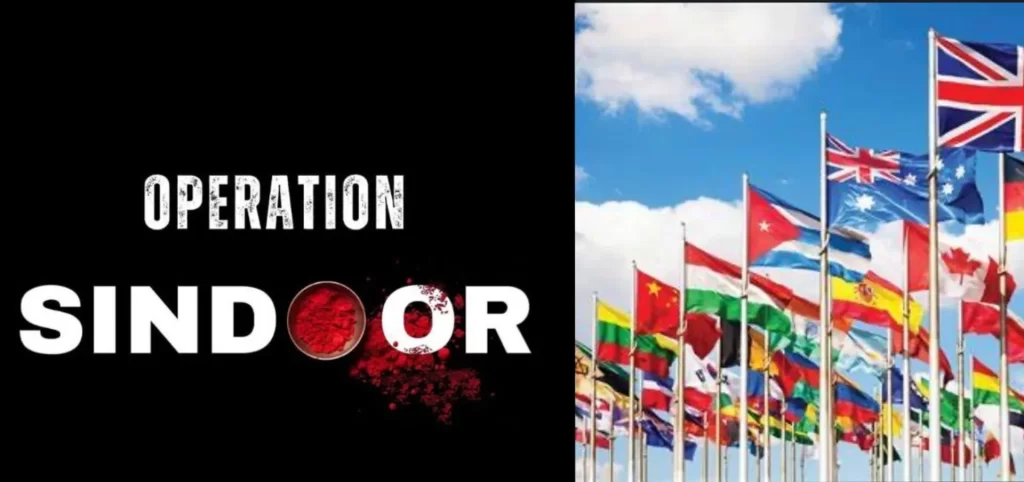
Operation Sindhoor stands as a landmark in India’s strategic military responses to cross-border terrorism. Following a series of escalating events, including the deadly Pahalgam attack, the Indian government launched a swift, calculated strike, sending a clear message to hostile forces. This article explores the operation’s timeline, planning, execution, and broader implications for India’s defense policy and regional stability.
Background: Rising Tensions and the Pahalgam Attack
Historical India-Pakistan Conflict
India and Pakistan have endured decades of conflict, marked by three major wars and numerous military skirmishes, particularly in Kashmir. The region has remained volatile, and any militant activity often escalates tensions quickly.
The Pahalgam Terror Attack
The immediate trigger for Operation Sindhoor was the Pahalgam terror attack in April 2025, which resulted in the loss of multiple Indian soldiers and civilians. This incident provoked nationwide outrage and led to calls for decisive action.
What is Operation Sindhoor?
Add Your Heading Text Here
The name “Sindhoor” symbolizes valor and sacrifice in Indian culture, traditionally applied to the forehead as a mark of dedication and protection. Naming the operation thus underscored its symbolic value.
Strategic Objectives
The main goal was to neutralize key terror launchpads across the Line of Control (LoC) and disrupt the logistics of militant networks suspected of planning future attacks.
Planning and Execution
Intelligence Gathering
Operation Sindhoor was not a spur-of-the-moment decision. It involved extensive intelligence gathering, surveillance, and reconnaissance, often supported by satellite imaging and cross-border informants.
Deployment and Precision Strikes
Using data from multiple sources, India carried out a series of precision strikes targeting terror camps. Indian armed forces precision strike capabilities played a pivotal role in ensuring minimal collateral damage.
Indian Armed Forces' Role
Special Forces Involvement
Elite units from the Indian Army, including Para SF, played an active role. Their swift infiltration and exfiltration tactics ensured mission success without incurring significant losses.
Use of Technology and Drones
The operation showcased the growing sophistication of India’s defense forces, especially the integration of drone surveillance and AI-driven targeting systems.
Political Implications
Domestic Political Response
Operation Sindhoor received bipartisan support in India, with political leaders uniting to back the armed forces. It served as a rallying point for national unity.
Operation Sindhoor Political Implications
The operation strengthened the ruling government’s stance on national security and helped in consolidating political capital ahead of upcoming elections.
International Reaction

Global Diplomatic Feedback
World powers, including the United States and France, recognized India’s right to self-defense but urged restraint to prevent full-scale escalation.
Operation Sindhoor International Reaction
The international reaction to Operation Sindhoor was mixed. While allies supported India’s move, neighboring countries expressed concerns over sovereignty and regional stability.
Military Strategy and Defense Policy
India’s Military Strategy Against Terrorism
This operation underscored India’s evolving doctrine of proactive defense. The strategy includes swift retaliation, cross-border operations, and technological superiority.
India's Defense Policy 2025
The 2025 defense policy focuses on modernization, indigenization of arms production, and strengthening of border security infrastructures.
Ceasefire Developments and Regional Impact
India Pakistan Ceasefire 2025
Despite the operation, backchannel diplomacy led to a reaffirmation of the 2021 ceasefire agreement. Operation Sindhoor acted as both a warning and a call for dialogue.
Long-Term Geopolitical Implications
India’s assertiveness may reshape regional power dynamics, potentially deterring future terror activities and influencing military strategies in South Asia.
Media Coverage and Public Sentiment
Operation Sindhoor News Update
Mainstream media and digital platforms extensively covered the operation, with real-time updates and expert panel discussions shaping public opinion.
Social Media and Civilian Reactions
#OperationSindhoor trended across platforms, as citizens expressed solidarity with the armed forces and demanded continued vigilance.
Conclusion
Operation Sindhoor represents a crucial pivot in India’s counter-terrorism playbook. By combining intelligence, precision strikes, and political resolve, India demonstrated its capability and willingness to protect its sovereignty. The operation’s outcomes will likely influence regional diplomacy, military preparedness, and national security policies for years to come.
FAQs
1. What is Operation Sindhoor?
Operation Sindhoor is a strategic military response launched by India in 2025 following the Pahalgam terror attack to neutralize cross-border threats.
2. What triggered Operation Sindhoor?
The operation was initiated in response to a deadly terror attack in Pahalgam that killed soldiers and civilians, prompting immediate military action.
3. How was the operation executed?
It involved precision strikes by Indian armed forces on identified terror camps, using advanced drone and surveillance technology.
4. What were the international reactions to Operation Sindhoor?
While allies supported India’s actions, some neighboring nations raised concerns about sovereignty and the risk of escalation.
5. How does Operation Sindhoor impact India’s future defense strategy?
It signals a shift towards proactive counter-terrorism and increased reliance on technology, forming a core part of India’s Defense Policy 2025.